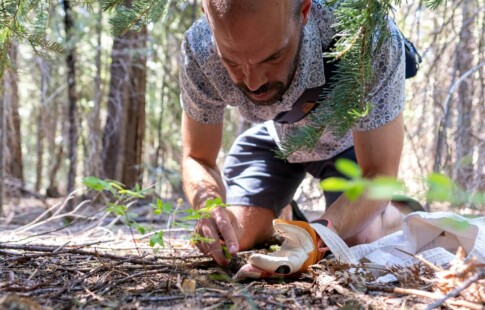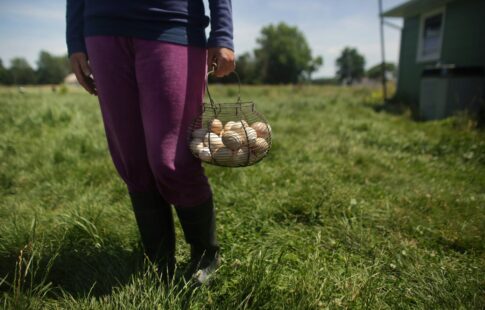
Why Soil Quality and Health Are Key to Agriculture
We are reader-supported. When you buy through links on our site, we may earn affiliate commission.
Every farm needs fertile soil to produce healthy crops. Soil quality and health is an essential factor in growing vegetables, plants, flowers and much more. Industrial and small farms survive off of quality earth, though each sector cultivates it through different methods. Commercial agriculture often consists of farming techniques that deplete the land, which can lead to failed crops. However, small farmers aren’t without their troubles — degraded soil affects them, too.
A better foundation equals increased plant growth. The solution to poor crops often lies with the simplest factor — dirt. Agriculture can improve by leaps and bounds by employing better ideas for soil management.
Characteristics of Good Soil
Healthy soil possesses countless microorganisms, along with plenty of organic matter. Without leaf litter and other types of plant matter, dirt struggles to thrive. This debris facilitates the growth of beneficial organisms, such as nematodes and fungi. Fungi like mycorrhizae provide trees with nutrients and water while transferring messages among root systems. Nematodes can be either beneficial or predatory, but helpful varieties eat other nematodes and supply plants with nutrients.
These organisms display various functions — mutualistic, competitive and neutral — which all serve to increase the soil’s fertility. Ecosystems are notoriously complex, with each creature serving an individualized purpose. Metagenomics, which is the study of genetic material from environmental samples, has helped scientists learn about root microbiomes. Identifying microbial strains helps researchers discover how organisms work together or against each other to sustain plant life.
Soil should hold enough water to sustain flora without causing root rot or waterlogged plants. Ideally, each dirt particle has enough room between itself and others to allow adequate airflow and water retention. A suitable aggregate is durable enough to withstand disruption from tilling and harvesting while providing spaces for nutrients and air to travel through. If the particles are too close, nothing can come in or out. Alternately, a loose aggregate lets in too many substances, which can overwhelm a crop.
Its Purpose in Sustainable Agriculture
Sustainable agriculture and soil quality go hand-in-hand. Without one, the other can’t succeed. Quality earth supports crops and enables them to provide the best yields. Dirt absorbs many different substances from plants — organic matter, nutrients and carbon. All these materials play a role in feeding the soil and greenery, creating an exchange that benefits both. Croplands are often major carbon sinks because of the CO2 they absorb, which funnels the substance out of the air and into the ground. This phenomenon is beneficial for reducing air pollution from carbon emissions.
Organic material encourages bacteria and other microorganisms to populate, and the soil often obtains this debris from the plants it nurtures. It can also come from animals and other microbes — as long as the material contains carbon, it’s usable. This matter gives the dirt its ability to hold water and withstand erosion. Organic substances undergo several changes as they decompose, which makes them unstable for a time. They don’t reach full stability until decomposition is complete — then, they’re resistant to further decay.
Many of the sustainable agriculture methods that reduce environmental impact also increase soil fertility. Cover crops prevent erosion and supply minerals to the ground for the next round of plants to feed off of. Measuring the soil’s water content and using irrigation systems nourishes the plants while keeping runoff out of groundwater sources. Natural fertilizers introduce microorganisms without unnecessary chemicals, making crops safer to harvest and eat.
Issues Concerning Soil Depletion
Though soil plays a huge role in agriculture, it often suffers due to poor farming practices and lack of knowledge. Humans have had a significant influence on land degradation due to unsustainable management techniques and contributions to climate change. Higher temperatures mean a greater possibility for fires, which can quickly decimate entire fields. Rising water levels speed up erosion, pushing back coastlines and washing away necessary topsoil.
Practices like crop rotation and rotational grazing can renew depleted soil. Many people don’t associate livestock with soil quality and health, but these animals have a tangible influence on their surroundings. Letting them graze in one area decreases the plant life and leaves the dirt with few nutrients. Establishing grazing schedules prevents livestock from feeding on a single spot, letting the grass grow back and boost the soil’s biodiversity.
No-till planting and rotational grazing are only two of numerous regenerative agriculture techniques. This sector of horticulture emphasizes minimal resource disruption. People can run productive farms without energy-intensive tools or harmful harvesting methods. People who uphold regenerative agriculture view their farmland as a part of the environment rather than a money source. Having a healthier perspective of the land enables them to treat it with the respect and care it needs.
Create Higher Soil Quality and Health
Improving soil quality and health is crucial to keeping agriculture afloat. Many crops can only flourish with stable, nutrient-filled soil, and the world’s food sources depend on successful harvests. Preventing the loss of organic matter and nutrients will help plants grow plentiful for an expanding population of humans.
Share on
Like what you read? Join other Environment.co readers!
Get the latest updates on our planet by subscribing to the Environment.co newsletter!
About the author

Jane Marsh
Starting from an early age, Jane Marsh loved all animals and became a budding environmentalist. Now, Jane works as the Editor-in-Chief of Environment.co where she covers topics related to climate policy, renewable energy, the food industry, and more.





